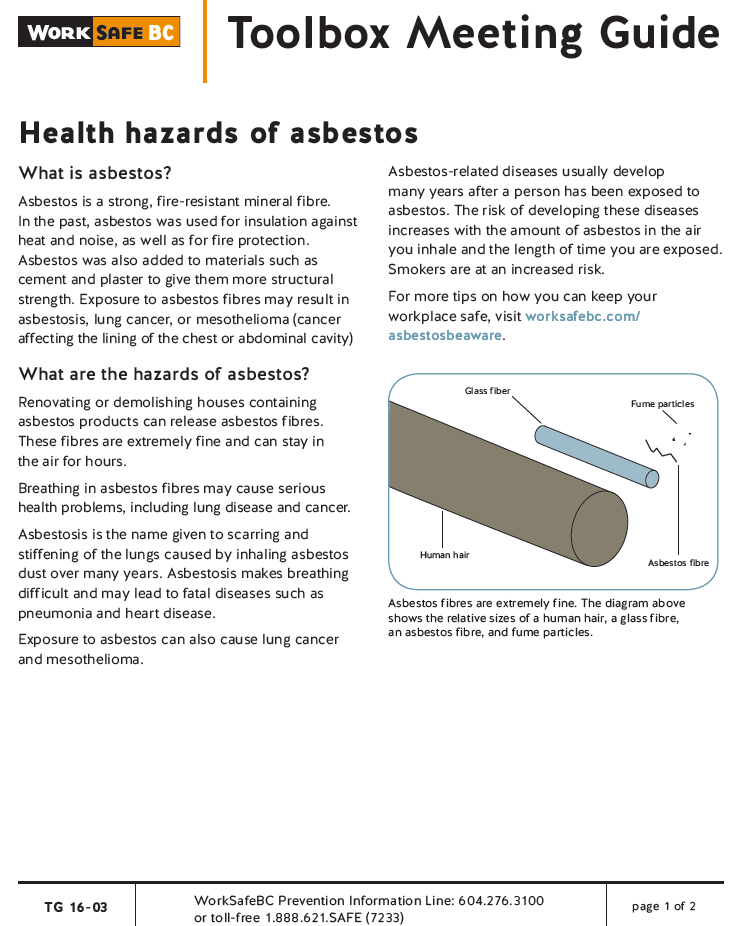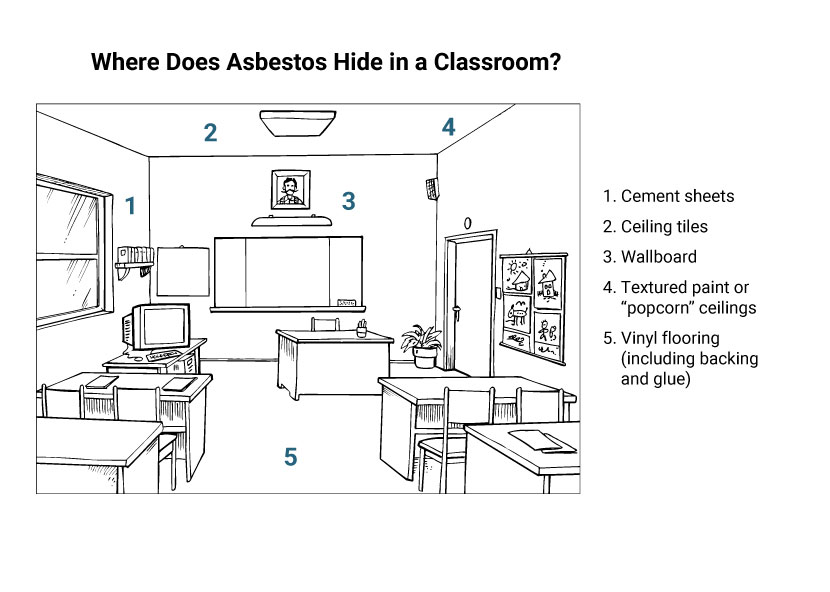Rumored Buzz on Asbestos Removal
Table of ContentsThe 30-Second Trick For Asbestos RemovalSome Known Details About Asbestos Removal The Single Strategy To Use For Asbestos Removal9 Easy Facts About Asbestos Removal Shown
Ventilation requirements specified in paragraphs 1 and 2 of subsection 12( 3) help to guarantee that workers in other parts of the work environment are not exposed to asbestos. In addition, the Regulation also needs a polyethylene enclosure if the workspace is not enclosed by walls and the operation is being continued inside.

The workspace must be separated from the remainder of the workplace by walls, barriers, fencing, or other ways that appropriate in the scenarios - Asbestos Removal. Indoor Type 3 operations mentioned in subsection 18( 4) need the usage of a polyethylene or other appropriate enclosure unless walls enclose the workspace. Unfavorable air pressure should be kept inside the enclosure unless the building will be destroyed and will only be entered by workers associated with the removal or by demolition workers.
Assessment and upkeep of the unfavorable air system, regular measurement of the negative air pressure, and regular evaluations of the work location (particularly the enclosure, barriers and decontamination center) are regulatory requirements that help to decrease air-borne asbestos fiber concentrations inside the enclosure. All Type 3 operations require separation in between the workspace and the rest of the workplace utilizing walls, barriers, fencing or other ideal methods.
The smart Trick of Asbestos Removal That Nobody is Talking About
When it comes to a multilevel workspace in an outside Type 3 operation explained in paragraphs 1, 2, 3, and 4 of subsection 12( 4 ), such as a removal on the side of a structure that requires using scaffolding, the various work levels need to be separated so that dust and waste will not fall easily from one level to another.
If the work is done outdoors or if it is carried out in a structure that will be demolished and will just be gotten in by the workers doing the asbestos elimination or by workers included in the demolition, then unfavorable air pressure does not have actually to be kept inside the enclosure.
The Regulation likewise recommends hygiene practices and procedures to safeguard employees, consisting of cleaning or shower centers, decontamination of individual protective clothing and devices, the restriction of eating, drinking, chewing and cigarette smoking, and the strict separation of tidy and infected clothes and devices. Facilities for cleaning the hands and face must be provided for workers and the workers need to use them when leaving the workspace.
Facilities for washing the face and hands should be offered and every employee must utilize these facilities as they leave the workspace. Employees who are bring out Type 3 operations described in paragraphs 1, 2, 3, 4 and 6 of subsection 12( 4) needs to go through a decontamination facility as they leave the workspace (Asbestos Removal).
The Single Strategy To Use For Asbestos Removal
If the work is done outdoors the decontamination facility must be established as close as practicable to the work area. If the work is done inside your home the decontamination facility should be found so that the workers should go through it to get in and leave the workspace. However, in some situations it might be required for the employer to use the provisions of area 23 to differ the techniques and procedures set out in the Guideline to establish a remote decontamination facility.

It is likewise recommended that non-powered respirators be thoroughly read review cleaned and, when it comes to my company a filter respirator, the filter cartridges taken in the shower and disposed of on the filthy side of the shower. The employee then exits the shower from the tidy side, with the respirator, and wears street clothes or a new set of coveralls that are saved in the tidy space.
Facilities for cleaning the hands and face should be provided and every worker needs to utilize these centers when leaving the workspace. The individual protective clothes and equipment needed by the Guideline includes respirators, to manage the exposure of employees in the workspace, and protective clothing, to secure employees from secondary direct exposures and to avoid employees from transferring asbestos from the work location.
The Ultimate Guide To Asbestos Removal
For more info on respirators see Chapter 12 (Asbestos Removal). Respirators approved by the National Institute for Occupational Security and Health (NIOSH) might be utilized in Type 1 operations if the employee demands them and are needed for Type 2 and Type 3 operations. Table 2 of the Regulation (see Chapter 12) sums up the respirator requirements for Type 1, Type 2, and Type 3 operations.
The requirements for protective clothing are set out in paragraph 12 of area 15 of the Guideline. It must: be made from material that does not maintain or permit the penetration of asbestos fibers, consist of ideal shoes and a head covering, and consist of a complete body covering that fits snugly at the wrists, ankles and neck.
They can be quickly torn, however, and click for info must be fixed or changed when this takes place. The option of appropriate shoes is reliant on the type of work. High top rubber boots are ideal for wet elimination work, and are readily available as safety shoes. Standard safety boots or safety shoes might be better for other types of work.